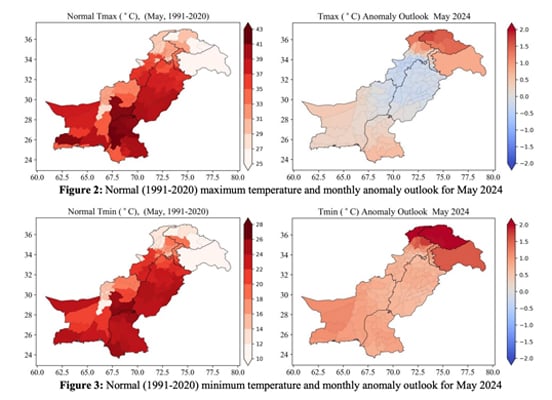LAHORE: An expert on the environment has forecasted that Punjab could experience a heatwave starting from May 12, with temperatures expected to rise above 40 degrees.
Speaking to Geo News Thursday, Dr Zulfiqar — an expert on environmental issues who conducts research on climate — said like Sindh, which is scorching with extreme temperatures, the heatwave is expected in Punjab from the second week of the ongoing month.
The expert suggested that it’s best for people to stay inside to prevent heatstroke and avoid going outside unless necessary.
He also suggested maintaining humidity in rooms by keeping water in wide pots.
‘Atmospheric conditions supportive of heatwave’
The Pakistan Meteorological Department (PMD) said in its May forecast that the neutral phase of the El Niño Southern Oscillation (ENSO) will continue, along with the ongoing positive phase of the Indian Ocean Dipole (IOD).According to the weather experts, most areas of the country can expect close to average rainfall, but regions like Khyber Pakhtunkhwa, northern Balochistan, northern Punjab, and Azad Kashmir might receive a bit more rain than usual.

It’s predicted that daytime temperatures will be a bit higher than usual in the north and south of the country. However, in the central areas, which include much of Punjab and southern Khyber Pakhtunkhwa, temperatures might be normal or slightly cooler than usual.
“Concurrently warmer than normal minimum temperatures are expected nationwide with maximum departure over northern KP, Gilgit-Baltistan and Kashmir.”
According to the weather department, above-normal precipitation in May is expected to benefit agriculture in Pakistan, but precautions should be taken to prevent damage to standing wheat crops during the harvesting stage from hailstorms and windstorms in Upper Khyber Pakhtunkhwa, Photohar region and Gilgit-Baltistan.
“The atmospheric conditions are supportive for the likelihood of heatwave development; especially over the plain areas of the southern half of the country,” the PMD noted.
Anticipated higher temperatures in high-altitude regions are expected to accelerate snowmelt in the northern areas, offering opportunities for irrigation and power generation, it concluded.









